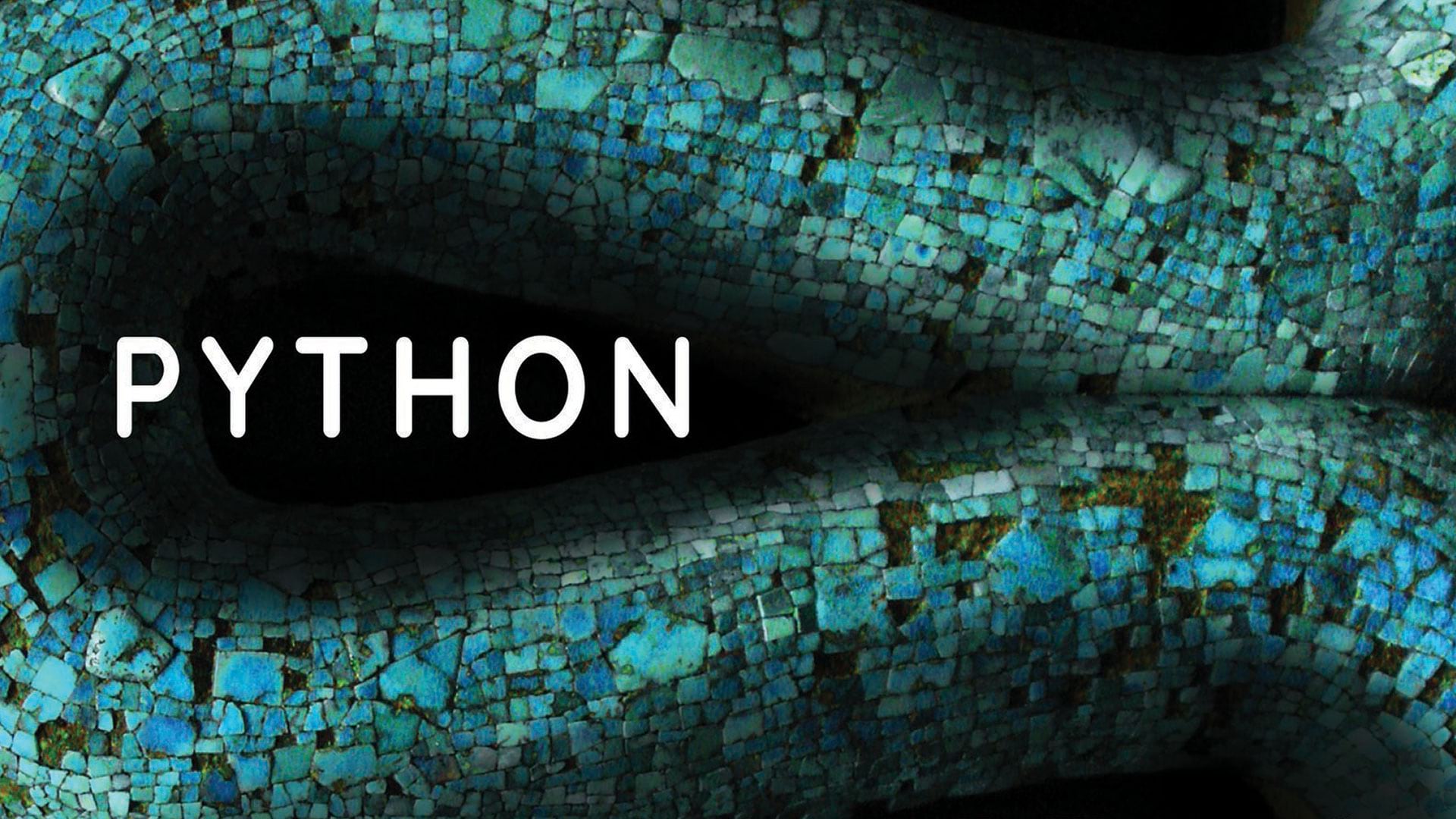More of us telecommute now than ever before, leaving at least some of the time we used to spend driving to and from work free to pursue opportunities for our professional development. Whether you work as a GIS manager or analyst; use GIS in science or another field; or are currently studying geography, geodesign, or GIS technology at a college or university, you might want to sign up for an Esri massive open online course (MOOC), take an online course from Esri Academy, or read a book about geospatial technology published by Esri Press.
Eight new books, available now or within the next few weeks, cover a wide range of GIS and geospatial science-related topics. Whether you are interested in learning Web GIS, working with GIS and scientific data, applying the fundamentals of GIS analysis, or writing Python scripts for your spatial data, there’s a book for you.
The following books may interest you as you continue your GIS education.
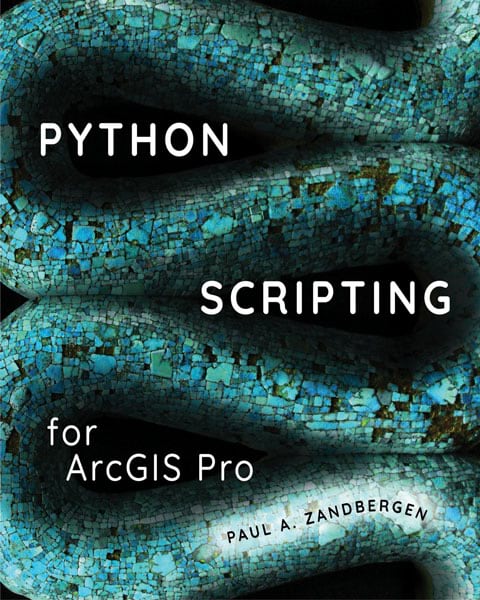
Python Scripting for ArcGIS Pro
Do you want to learn how to write Python scripts to automate your workflows in ArcGIS?
Paul A. Zandbergen wrote Python Scripting for ArcGIS Pro to guide you through this process, step by step. Zandbergen, a professor in the GIS program at Vancouver Island University in Vancouver, British Columbia, Canada, teaches readers how to write Python scripts that work with spatial data in ArcGIS Pro. This book will kick-start your GIS programming skills and teach you to create scripts to automate geoprocessing workflows, thereby increasing efficiency and saving time.
In addition to learning the fundamentals of working with the Python programming language, the book will teach you how to do the following:
- Set up a Python editor.
- Automate geoprocessing tasks.
- Explore and manipulate spatial and tabular data.
- Work with geometries using cursors.
- Work with rasters and map algebra.
- Automate mapping tasks.
- Handle debugging and errors.
Python Scripting for ArcGIS Pro is geared toward professionals and students with or without Python experience.
Zandbergen is the author of several books on Python scripting, including Advanced Python Scripting for ArcGIS Pro, which is described below. He is an expert in areas such as geographic information science, spatial and statistical analysis techniques using GIS, and terrain analysis and modeling.
(Esri; print edition ISBN: 9781589484993, US$79.99; e-book ISBN: 9781589485006, US$79.99)
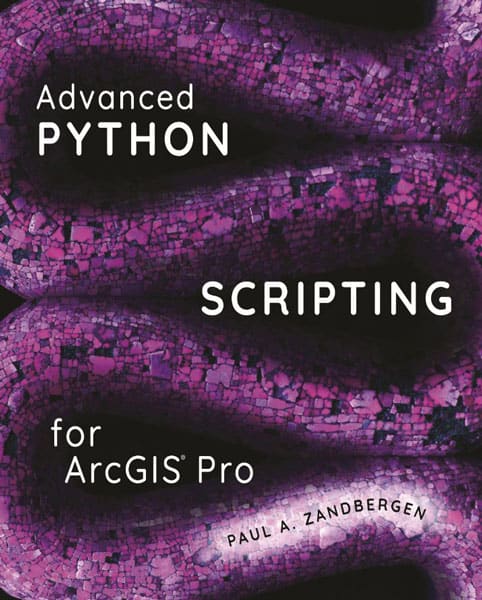
Advanced Python Scripting for ArcGIS Pro
After mastering what you learned in Zandbergen’s Python Scripting for ArcGIS Pro, you can take your scripting skills to the next level by reading another of his books, Advanced Python Scripting for ArcGIS Pro.
This book teaches you how to work with Python toolboxes, create and share script tools, manage Python packages and environments, work with Jupyter Notebook, use ArcPy and ArcGIS API for Python, and much more. ArcPy is a Python site package that provides a useful and productive way to perform geographic data analysis, data conversion, data management, and map automation with Python.
(Esri; print edition ISBN: 9781589486188, US$69.99; e-book ISBN: 9781589486195, US$69.99)
GIS for Science: Applying Mapping and Spatial Analytics
GIS for Science: Applying Mapping and Spatial Analytics, vol. 2, presents real-world and current examples of scientists using GIS and spatial data science to make strides in fields ranging from agriculture to epidemiology.
Scientists contributed chapters to the book, sharing stories of how they use satellites, aircraft, ships, drones, and other remote-sensing technologies to collect data, and then use the ArcGIS platform to analyze and map the data.
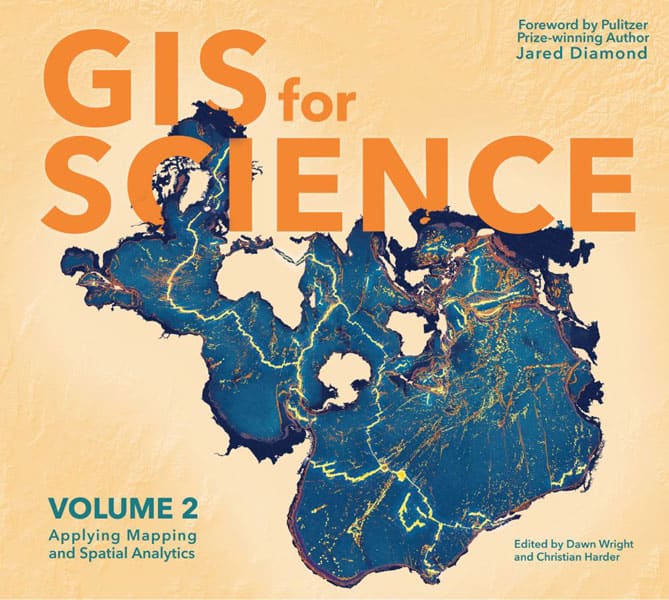
Readers will learn how GIS is used in areas such as epidemiology studies in light of the coronavirus disease 2019 (COVID-19) pandemic; sustainable precision agriculture; the science of predicting geological processes below the surface of the earth; near real-time disaster response, recovery, resilience, and reporting; and air quality monitoring.
The book was co-edited by Esri chief scientist Dawn Wright and Esri technology writer and information designer Christian Harder. It includes a foreword by Pulitzer Prize winner Jared Diamond.he stories in the book also show how ArcGIS software and the ArcGIS Online cloud-based system work as a comprehensive geospatial platform to support research, collaboration, spatial analysis, and science communication throughout many communities.
To learn more, visit gisforscience.com. On the site, you will find a collection of digital resources related to each chapter including additional maps, videos, web apps, and story maps.
(Esri; print edition ISBN: 9781589485877, US$39.99; e-book ISBN: 9781589485884, US$39.99)
The Esri Guide to GIS Analysis, Volume 1: Geographic Patterns and Relationships, second edition
If you are looking for a book that offers useful concepts and fundamentals on geospatial analysis, here is one that fits the bill: The Esri Guide to GIS Analysis, Volume 1: Geographic Patterns and Relationships, second edition.
You will learn the basics about geographic features and attributes. You will also learn the fundamentals of mapping and analyzing where things are located, where the most and the least of them are, and what’s inside an area as well as quantities, densities, and change over time.

The book is geared toward both new and experienced GIS users who want to learn or improve their GIS mapping and analytic skills to more clearly see the patterns and trends in their data and make better sense of the information. To help you reinforce the concepts you learn and practice the GIS applications in the book, Esri provides access to a selection of ArcGIS Learn lessons.
Andy Mitchell authored the Esri Guide to GIS Analysis series. He is a technical writer with more than three decades of GIS experience.
(Esri; print edition ISBN: 9781589485792, US$49.95; e-book ISBN: 9781589485808, US$49.95)
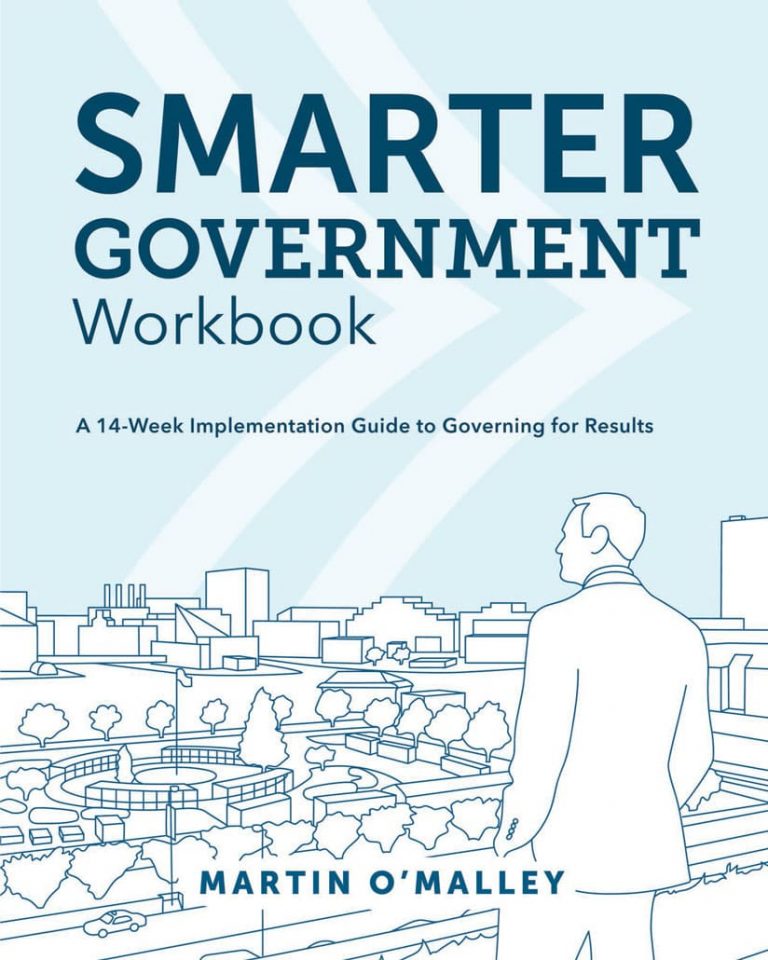
Smarter Government Workbook: A 14-Week Implementation Guide to Governing for Results
This workbook is a companion to Smarter Government: How to Govern for Results in the Information Age, the 2019 book by former Maryland governor Martin O’Malley outlining how he put into practice a performance measurement and management system for the City of Baltimore and the state.
In the new workbook, O’Malley provides a practical, interactive 14-week plan that governments can follow to implement the performance measurement and management (“Stat”) system.
The workbook walks readers through how to create a framework that will help them do the following:
- Set up a system for gathering and sharing accurate and timely information.
- Deploy resources quickly.
- Build leadership and collaboration.
- Develop and refine effective strategic goals and key performance indicators.
- Assess results.
O’Malley adopted a Stat system after he was elected mayor of Baltimore in 1999. That system was modeled after CompStat, a crime management system that New York City launched in the early 1990s. When O’Malley was elected governor in 2007, he implemented Stat systems in state agencies.
(Esri; print edition ISBN: 9781589486027, US$19.99)
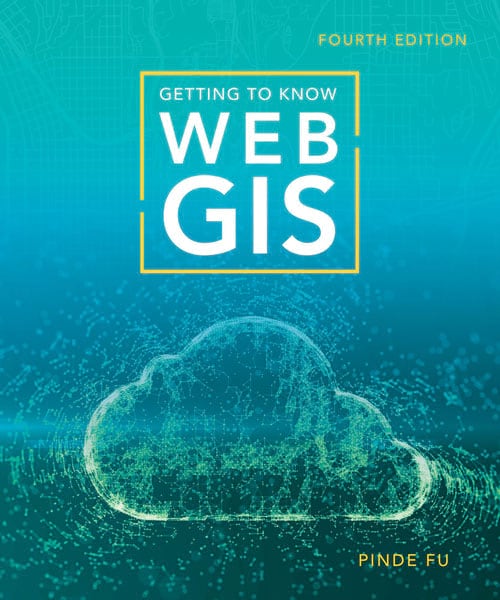
Getting to Know Web GIS, fourth edition
Everything you want to know about Web GIS is in Pinde Fu’s Getting to Know Web GIS, fourth edition.
Fu has been writing about Web GIS since 2015, updating his Getting to Know Web GIS book almost every year. This edition covers the latest capabilities of Web GIS available throughout the ArcGIS platform, including products such as ArcGIS Online, ArcGIS Enterprise, ArcGIS Web AppBuilder, and ArcGIS Survey123.
Fu also introduces and explains how to use the capabilities in new products such as ArcGIS Experience Builder, ArcGIS Indoors, and ArcGIS QuickCapture.
In the book is a mix of GIS concepts and principles, with tutorials including step-by-step instructions, a section that addresses common questions, a series of assignments, and a resource list.
Fu leads the ArcGIS platform engineering team at Esri and teaches at several universities, including Harvard Extension School. His expertise is mainly in web and mobile GIS technologies and applications.
This book’s content was designed for students, instructors, professionals such as GIS managers, and web developers. It can be used in either a classroom lab or an on-the-job training session setting.
(Esri; print edition ISBN: 9781589485921, US$94.99; e-book ISBN: 9781589485938, US$94.99)
Women and GIS, Volume 2: Stars of Spatial Science
Read Women and GIS, Volume 2: Stars of Spatial Science for 30 inspiring stories about women who use geospatial technology to advance science and better the lives of people globally.
The women share childhood experiences that shaped their interest in fields such as geographic science, statistics, cartography, urban planning, geology, remote sensing, and education.
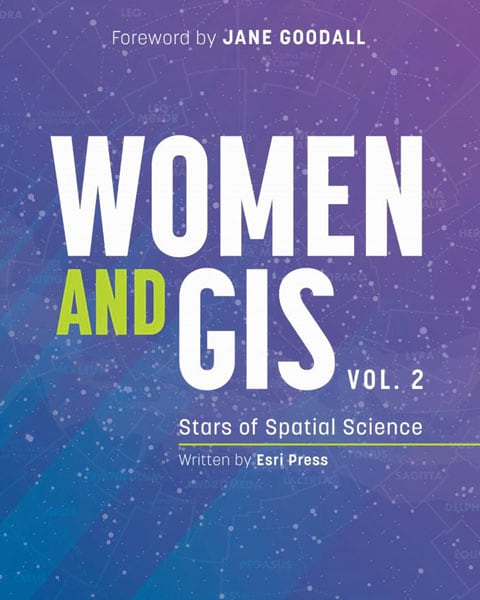
The people profiled include Rae Wynn-Grant, a research fellow with the National Geographic Society; Verónica Vélez, an associate professor at Western Washington University; Cyhana Lena Williams, a GIS mapping specialist; Amy Steiger, a GIS manager and remote aircraft systems pilot; Ingrid H. J. Vanden Berghe, the head of the National Geographic Institute (NGI) of Belgium; and Hoàng Chi Smith, former GIS division chief for the California Governor’s Office of Emergency Services (Cal OES).
The book’s foreword was written by primatologist Jane Goodall, founder of the Jane Goodall Institute.
“Today there are many people from all countries who tell me they were inspired to work with animals when they learned about my story. The 30 women featured in this book are applying GIS technology every day. . . . They are the strong, passionate women who serve as mentors by inspiring others through their actions. It is my hope that, working together, we can create a critical mass of people who think differently and help to make the world a better place for all people, animals, and the environment.”
(Esri; print edition ISBN: 9781589485945, US$19.99; e-book ISBN: 9781589485952, US$19.99)
The International Geodesign Collaboration: Changing Geography by Design
As Esri president Jack Dangermond says in this book’s foreword, geodesign offers a framework and process to integrate geographic sciences into how we plan our communities and our infrastructure, green or otherwise.
“Geodesign uses analysis to visualize, integrate, and model [environmental and social] factors,” he wrote. “It is helping designers collaborate and create better plans, and then assess what the future will look like should certain decisions be made.” Stakeholder input, spatial analysis, design, scientific rigor, and collaboration are all paramount.
The 51 geodesign projects published in The International Geodesign Collaboration: Changing Geography by Design comprise what is truly a collaborative effort organized by the International Geodesign Collaboration. More than 1,100 students and faculty members from colleges and universities throughout the world made contributions to the designs.

Using geodesign methods and geospatial technologies such as GIS, each contributing university or college completed a design project. Descriptions of the projects, along with maps, photographs, and other visuals, are published in the book. The projects were undertaken based on the following assumptions:
- The population will continue to grow and become older.
- Higher percentages of populations will live in urban areas.
- Transportation will become more automated.
- The global economy will double.
- Global temperatures and sea levels will rise.
- Fresh water will become scarcer.
The projects are mainly focused on green infrastructure; agriculture; transportation infrastructure; green energy; and mixed, higher density housing. Participating schools included Harvard University and the University of California, Berkeley, in the United States; University College London, United Kingdom; Harran University in Turkey; University of Buenos Aires, Argentina; University of New South Wales, Australia; Ahmadu Bello University, Nigeria; Ritsumeikan University, Japan; and Beijing Forestry University, China.
The book was edited by Thomas Fisher, Brian Orland, and Carl Steinitz. Fisher is director of the Minnesota Design Center and is the Dayton Hudson chair in urban design at the University of Minnesota. Orland is the Rado Family Foundation/University of Georgia Foundation professor of geodesign at the University of Georgia, College of Environment + Design. Steinitz is the Alexander and Victoria Wiley professor emeritus of landscape architecture and planning at the Harvard University Graduate School of Design.
(Esri; print edition ISBN: 9781589486133, US$39.99; e-book ISBN: 9781589485730, US$39.99)
